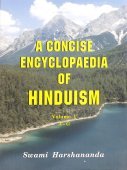Svayambhuvalinga, Svāyambhuvaliṅga, Svayambhuva-linga: 2 definitions
Introduction:
Svayambhuvalinga means something in Hinduism, Sanskrit. If you want to know the exact meaning, history, etymology or English translation of this term then check out the descriptions on this page. Add your comment or reference to a book if you want to contribute to this summary article.
In Hinduism
Shaivism (Shaiva philosophy)
Source: Wisdom Library: ŚaivismSvāyambhuvaliṅga (स्वायम्भुवलिङ्ग) refers to a type of sthāvaraliṅgas, or, “immovable liṅgas”, according to a list found in both the Suprabhedāgama and the Kāmikāgama. The term is used thoughout Śaiva literature.

Shaiva (शैव, śaiva) or Shaivism (śaivism) represents a tradition of Hinduism worshiping Shiva as the supreme being. Closely related to Shaktism, Shaiva literature includes a range of scriptures, including Tantras, while the root of this tradition may be traced back to the ancient Vedas.
Shilpashastra (iconography)
Source: Google Books: Elements of Hindu iconographyThe svāyambhuva-liṅga (स्वायम्भुवलिङ्ग) is described in the Kāmikāgama as one which rose up and came into existence by itself and had existed from time immemorial. As such, even if these are slightly damaged by causes such as fire, wild elephants, inundation or encroachment of rivers, enemies of religion like the Tuluṣkas, madmen or men possessed by devils, they need no re-setting up (jirṇoddhāra). If anything at all is necessary, it is but a few ceremonials that might be done to purify the liṅga from pollution.
A svāyambhuva-liṅga is considered so sacred that is is above all the rules laid down in the Āgamas for the other classes of liṅgas. If such indeed be the superiority of the svāyambhuva-liṅgas over others, it is no wonder that every village claims the svāyambhuva nature for the liṅga set up in its temple. Sixty-eight places, which are situated in various parts of India, are said to possess svāyambhuva-liṅga and a list of these places, is given in the commentary on his Jirṇoddhāra-daśakam by Nigamajñānadeva of Vyāghrapura, son of Vāmadevaśivācārya.
The Kiraṇāgama informs us that the svāyambhuva-liṅgas, the ārṣa-liṅgas and the daivika-liṅgas have no shape (rūpa) and no measurements (māna) and are recognised only by their respective shapes.

Shilpashastra (शिल्पशास्त्र, śilpaśāstra) represents the ancient Indian science (shastra) of creative arts (shilpa) such as sculpture, iconography and painting. Closely related to Vastushastra (architecture), they often share the same literature.
See also (Relevant definitions)
Partial matches: Linga, Svayambhuva.
Full-text (+114): Hara, Kirata, Patala, Prabhasa, Gayatri, Kapardin, Kashmira, Varishta, Sahasraksha, Ekagrama, Kriteshvara, Vrishasthana, Saptagodavara, Nagareshvara, Bhasmakaya, Varaha, Ambika, Rudra, Svayambhu, Kanakhala.
Relevant text
Search found 1 books and stories containing Svayambhuvalinga, Svāyambhuvaliṅga, Svayambhuva-linga, Svāyambhuva-liṅga; (plurals include: Svayambhuvalingas, Svāyambhuvaliṅgas, lingas, liṅgas). You can also click to the full overview containing English textual excerpts. Below are direct links for the most relevant articles:
Lakulisha-Pashupata (Philosophy and Practice) (by Geetika Kaw Kher)
Historicity (of the term linga) < [Chapter 6 - Siva-linga: an Iconological Study]
Related products
